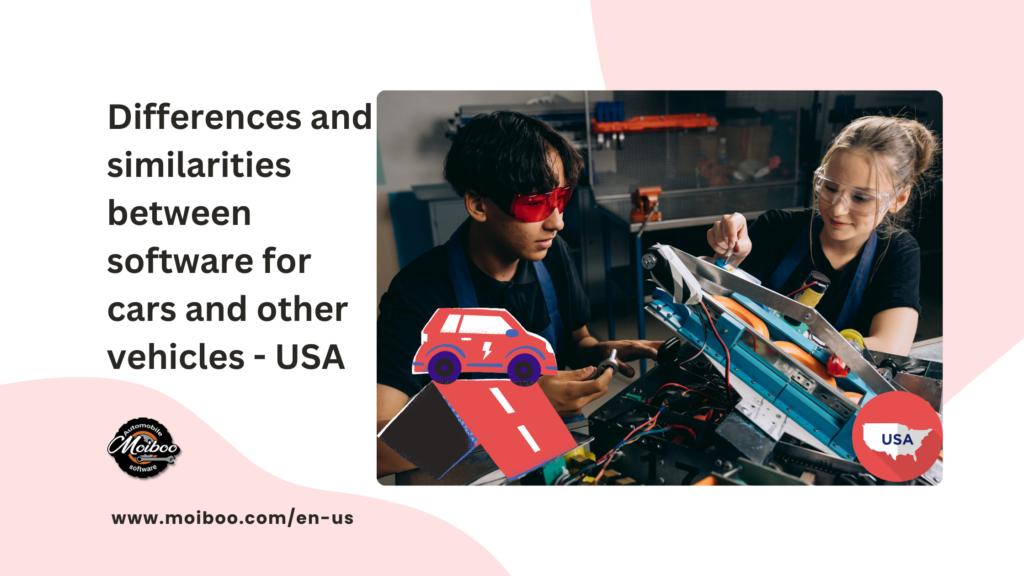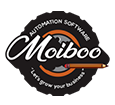There are differences and similarities between software for cars and other vehicles that depend on factors such as the purpose, design, complexity, and connectivity of the vehicle.

Software is an essential component of modern vehicles, whether they are cars, trucks, buses, motorcycles, or any other type of transportation. Software for cars enables various functions and features that enhance the performance, safety, comfort, and convenience of vehicles. However, not all software is the same for different types of vehicles.
Below you will get information about the factors in which software for cars matters:
Purpose
One of the main factors that determines the difference between software for cars and other vehicles is the purpose of the vehicle. Different types of vehicles have different use cases, requirements, and expectations from their users. For example, a car is typically used for personal or family transportation, while a truck is used for commercial or industrial purposes.
A bus is used for public transportation, while a motorcycle is used for recreational or sporty riding. These different purposes influence the type and amount of software that is needed for each vehicle.
For instance, software for cars supports advanced driver-assistance systems (ADAS), such as adaptive cruise control, lane keeping assist, blind spot detection, and parking assist. These systems help the driver to drive more safely and comfortably in various traffic situations.
A truck may need software that supports fleet management systems, such as telematics, fuel efficiency monitoring, route optimization, and driver behavior analysis. These systems help the fleet owner to manage the operations and costs of the truck fleet.
A bus may need software that supports public transportation systems, such as passenger information systems, ticketing systems, real-time traffic information, and emergency communication systems. These systems help the passengers to travel more conveniently and securely on the bus.
A motorcycle may need software that supports riding assistance systems, such as traction control, anti-lock braking system (ABS), stability control, and cornering ABS. These systems help the rider to ride more confidently and safely on different road conditions.
Design
Another factor that determines the difference between software for cars and other vehicles is the design of the vehicle. Different types of vehicles have different physical characteristics, such as size, shape, weight, aerodynamics, engine type, transmission type, fuel type, and so on. These characteristics affect the design of the software that is needed for each vehicle.
For example, software for cars are designed to optimize the performance and efficiency of its internal combustion engine (ICE), which uses gasoline or diesel as fuel. The software may control various parameters such as ignition timing, fuel injection, air-fuel ratio, exhaust gas recirculation (EGR), and so on.
A truck may need software that is designed to optimize the performance and efficiency of its diesel engine or hybrid engine (which combines an ICE with an electric motor), which uses diesel or electricity as fuel. The software may control various parameters such as turbocharging pressure, regenerative braking energy recovery (RBER), battery management system (BMS), and so on.
A bus may need software that is designed to optimize the performance and efficiency of its electric engine or fuel cell engine (which uses hydrogen as fuel). The software may control various parameters such as power output, voltage regulation, thermal management system (TMS), and so on.
A motorcycle may need software that is designed to optimize the performance and efficiency of its ICE or electric engine, which uses gasoline or electricity as fuel. The software may control various parameters such as throttle response, engine mapping, torque delivery, and so on.
Complexity
Another factor that determines the difference between software for cars and other vehicles is the complexity of the vehicle. Different types of vehicles have different levels of complexity, which refers to the number and variety of components, systems, and functions that are involved in the vehicle. The complexity affects the amount and quality of software that is needed for each vehicle.
For example, software for cars complex enough to handle multiple subsystems, such as powertrain, chassis, body, infotainment, and security. The software may also need to integrate with various sensors, actuators, cameras, radars, and lidars that are distributed throughout the vehicle. The software may also need to communicate with external devices, such as smartphones, navigation systems, and cloud services. A truck may need software that is complex enough to handle multiple subsystems, such as powertrain, chassis, body, cargo management, and safety.
The software for cars also need to integrate with various sensors, actuators, cameras, radars, and lidars that are distributed throughout the vehicle. The software may also need to communicate with external devices, such as smartphones, navigation systems, and cloud services.
A bus may need software that is complex enough to handle multiple subsystems, such as powertrain, chassis, body, passenger management, and security. The software may also need to integrate with various sensors, actuators, cameras, radars, and lidars that are distributed throughout the vehicle.
The software may also need to communicate with external devices, such as smartphones, ticketing systems, and public transportation systems. A motorcycle may need software that is complex enough to handle multiple subsystems, such as powertrain, chassis, body, riding assistance, and security.
The software for cars may also need to integrate with various sensors, actuators, cameras, radars, and lidars that are distributed throughout the vehicle. The software may also need to communicate with external devices, such as smartphones, navigation systems, and cloud services.
Connectivity
Another factor that determines the difference between software for cars and other vehicles is the connectivity of the vehicle. Different types of vehicles have different levels of connectivity, which refers to the ability of the vehicle to exchange data and information with other vehicles, devices, and networks. The connectivity affects the functionality and value of the software that is needed for each vehicle.
For example, software for cars supports high levels of connectivity, such as vehicle-to-vehicle (V2V), vehicle-to-infrastructure (V2I), vehicle-to-network (V2N), and vehicle-to-everything (V2X) communication. These types of communication enable the car to share and receive information about traffic conditions, road hazards, weather updates, and other relevant data that can improve the safety and efficiency of driving. A truck may need software that supports high levels of connectivity, such as V2V, V2I, V2N, and V2X communication.
These types of communication enable the truck to share and receive information about traffic conditions, road hazards, weather updates, and other relevant data that can improve the safety and efficiency of driving. The truck may also need software that supports vehicle-to-cloud (V2C) communication, which enables the truck to upload and download data from cloud-based platforms that can provide analytics, optimization, and remote management services for the truck fleet.
A bus may need software that supports high levels of connectivity, such as V2V, V2I, V2N, and V2X communication. These types of communication enable the bus to share and receive information about traffic conditions, road hazards, weather updates, and other relevant data that can improve the safety and efficiency of driving. The bus may also need software that supports V2C communication, which enables the bus to upload and download data from cloud-based platforms that can provide analytics, optimization, and remote management services for the bus fleet.
Conclusion
Software is a key element of modern vehicles that enables various functions and features that enhance the performance, safety, comfort, and convenience of vehicles. However, not all software is the same for different types of vehicles. There are differences and similarities between software for cars and other vehicles that depend on factors such as the purpose, design, complexity, and connectivity of the vehicle. Understanding these differences and similarities can help automotive manufacturers, suppliers, developers, and users to create and use software solutions that are suitable and optimal for each type of vehicle.
